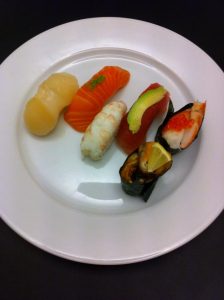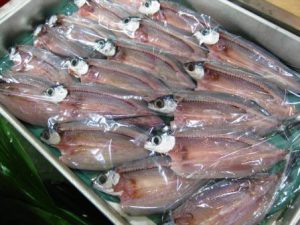
I meet more and more people on my courses that have been in Japan.
There may be different reasons why sushi in Japan tastes differently. In Japan, you will often find some completely different fish on the menu than what you find at a Danish sushi restaurant.
Japanese sushi chefs in Tokyo also have a completely different background to Danish sushi chefs. The Japanese sushi chefs have a completely different knowledge and uses other techniques in preparing sushi. In Japan, it is very normal for techniques to take 20, 30 or 40 years to master. There is a slightly different approach to ingredients and sushi than what you see at a Danish sushi restaurant.
On the Sushi course for beginners you will learn how to prepare sushi of such quality that it is suitable to be served at a private dinner table.
Read more about Sushi course for beginners
_
Zoë has held sushi courses and cooking classes for A. P. Moller – Maersk, Hugo Boss Nordic, Novo Nordisk, Novartis, Velux, Gorrissen Federspiel, Beierholm revision, Elbek & Vejrup and many more.









